Understanding Mortgage Interest Rates Today
Ever pondered how today’s mortgage interest rates could shape your financial future? As you explore the complex realm of home buying and refinancing, grasping the intricacies of current mortgage rates is more critical than ever. The importance of mortgage interest rates cannot be overstated. They influence not just your monthly payments but also how much home you can purchase.
In a constantly shifting economic environment, gaining insights into market conditions empowers you to make informed decisions. This knowledge allows you to effectively navigate through your financing options, securing the best mortgage rates available.
Key Takeaways
- Understanding mortgage interest rates is essential for home buying or refinancing.
- The impact of rates on your monthly payments can alter your purchasing power.
- Current mortgage rates vary widely, influenced by market conditions and Federal policies.
- Awareness of your financial situation, including down payment options, is vital.
- Exploring multiple lenders can reveal favorable mortgage rates.
Introduction to Mortgage Interest Rates
Grasping mortgage interest rates is vital for anyone delving into home loans or pondering a mortgage. These rates signify the borrowing cost for a home purchase, usually given as annual percentage rates (APR). They dictate your monthly payments over the loan’s duration, profoundly affecting your financial obligations.
Multiple elements shape mortgage interest rates. Economic conditions, including inflation, employment, and global events, significantly influence loan pricing. For instance, rising inflation can push mortgage rates up, increasing borrowing costs. Your creditworthiness also plays a part; a better credit score often leads to lower rates, making homes more affordable.
Currently, the federal funds rate is between 4.25-4.5 percent, a figure many experts foresee staying put soon. This stability offers a degree of predictability for those seeking a mortgage, aiding in informed financial planning. By understanding this context, you can better navigate the borrowing process, positioning yourself for the best home loan opportunities.
Current Trends in Mortgage Interest Rates
To grasp the current mortgage interest rate trends, we must analyze several key factors. Inflation pressures continue to influence these rates, impacting both new and existing homeowners. Economic policies also play a significant role, leading to varied mortgage rates based on market conditions.
Factors Influencing Today’s Rates
Several critical factors shape today’s mortgage rates. Inflation, in particular, is a major driver, pushing rates up as lenders seek to maintain their profit margins. Economic growth, unemployment rates, and consumer confidence also have significant roles. An increase in buyer demand tightens the housing market, driving rates higher.
- Inflation Rates: Higher inflation prompts lenders to raise mortgage rates to manage risk.
- Economic Stability: A stable economy fosters lending, potentially lowering rates.
- Consumer Demand: High demand in the housing market can push rates upward.
The Impact of Federal Reserve Policies
The Federal Reserve significantly influences mortgage rates through its monetary policies. Adjustments to benchmark interest rates directly affect lending costs. Recent policy shifts have led to rate fluctuations, impacting borrowing costs for homebuyers. Grasping these dynamics is essential for effective housing market navigation.
| Federal Rate Action | Date | Impact on Mortgage Rates |
|---|---|---|
| Increased Rate | June 2023 | Mortgage rates rose, slowing down home buying activity. |
| Stable Rate | August 2023 | Mortgage rates stabilized but remained elevated amid inflation concerns. |
| Potential Cuts | Projected 2024 | Anticipation of lower rates if inflation decreases significantly. |
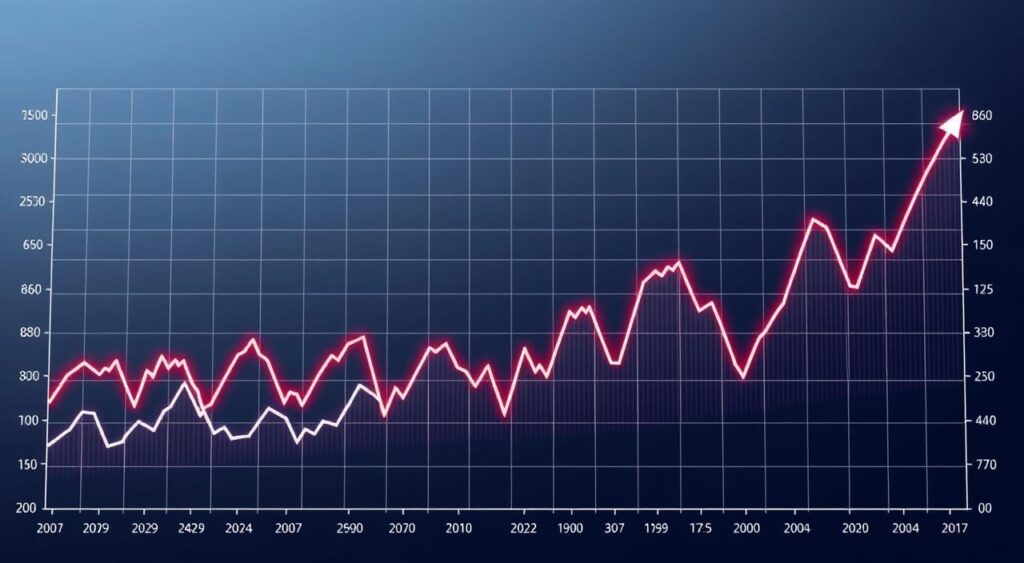
The Best Mortgage Rates Available
Finding the best mortgage rates requires a strategic approach. With numerous lenders competing, comparing their terms can lead to significant savings. Assess your financial situation, including your debt-to-income ratio and credit score. A good debt-to-income (DTI) ratio is between 28% to 36%, helping lenders determine your eligibility for favorable loan terms.
Adhering to the 28/36 rule is essential. This rule states that no more than 28% of your gross monthly income should go towards housing expenses. Total debt payments should not exceed 36%. Following these guidelines can improve your chances of qualifying for the best mortgage rates.
When comparing lenders, consider interest rates, reputation, fees, and customer service quality. The difference in interest rates can significantly affect your monthly payments. Below is a comparison table of some well-known lenders and their terms for a $200,000 loan at 6% for a 30-year fixed mortgage:
| Lender | Interest Rate | Monthly Payment | APR |
|---|---|---|---|
| Bank A | 6.00% | $1,194 | 6.10% |
| Bank B | 5.75% | $1,160 | 5.85% |
| Bank C | 6.25% | $1,232 | 6.35% |
Take the time to shop around for competitive mortgage offers. Each lender’s criteria can vary significantly. It’s critical to gather multiple quotes to identify the most advantageous rates. Factors such as the loan-to-value ratio also play a role. Generally, an LTV ratio of 80% is preferred for optimal mortgage conditions, leading to enhanced loan options and the possibility of lower rates.
By being proactive and researching lenders thoroughly, you can secure the best mortgage rates available. This will secure your financial investment in the long term.
Low Mortgage Interest Rates: What You Need to Know
Low mortgage interest rates open up significant opportunities for homebuyers. These rates boost your home buying power and enhance mortgage affordability. Grasping how these rates affect your financial decisions is key to making smart choices in the housing market.
How Low Rates Affect Your Home Buying Power
The relationship between mortgage interest rates and your home buying power is vital. Lower rates can cut down your monthly payments, allowing you to take on a larger mortgage. For example, the “28/36 rule” shows the importance of low rates. It states that no more than 28% of your gross monthly income should go to housing costs.
Let’s say you borrow $200,000 at a 6% annual interest rate over 30 years. Your monthly payment would be $1,194. A small drop in the interest rate can lead to significant savings, making owning a home more feasible.
- With a $400,000 home, a $40,000 down payment can better protect your financial safety net than $30,000.
- Making an extra $200 payment each month on a $300,000 mortgage can shorten the loan term. This saves you a lot in interest over time.
- Increasing your monthly payment can help you reach 20% equity faster. This means you can eliminate private mortgage insurance, reducing your monthly expenses.
Low mortgage interest rates not only make homes more affordable but also influence your choice between fixed-rate and adjustable-rate mortgages (ARMs). ARMs might offer lower initial rates and payments. Yet, careful planning is necessary to ensure long-term financial stability.

| Scenario | Loan Amount | Interest Rate | Monthly Payment | Total Interest Paid |
|---|---|---|---|---|
| Fixed Rate (30 years) | $200,000 | 6% | $1,194 | $143,739 |
| Fixed Rate (30 years) | $200,000 | 5% | $1,073 | $128,425 |
| Adjustable Rate (initial) | $200,000 | 4% | $955 | $115,189 |
In conclusion, monitoring mortgage interest rates can enhance your home buying power and maximize mortgage affordability. Understanding the financial implications of your choices is essential for a secure path to achieving your home ownership goals.
Understanding the Mortgage Rate Comparison
When you’re looking at mortgage options, it’s key to know the difference between fixed and adjustable rate mortgages. Each has its own pros and cons that can greatly impact your finances, based on your long-term plans.
Fixed Rate vs. Adjustable Rate Mortgages
A fixed-rate mortgage means your monthly payments stay the same, with no rate changes. This stability helps with budgeting and gives you peace of mind against rate hikes. On the other hand, an adjustable rate mortgage starts with a lower rate, making payments easier at first. But, your rate can change, possibly raising your payments later on.
| Feature | Fixed Rate Mortgage | Adjustable Rate Mortgage |
|---|---|---|
| Interest Rate Stability | Constant throughout the term | Initial low rate, subject to change |
| Initial Payment | Higher due to fixed rate | Lower initially due to adjustable rate |
| Long-Term Payment Security | Yes | No, rates can increase |
| Potential for Lower Payments | No | Yes, initially |
| Best For | Long-term homeowners | Shorter-term homeowners |
How to Use a Mortgage Rate Calculator
A mortgage rate calculator is a handy tool for figuring out your monthly payments and mortgage affordability. To get the most out of it, follow these steps:
- Input your desired loan amount.
- Select the interest rate based on current rates for either a fixed rate mortgage or an adjustable rate mortgage.
- Choose a loan term, typically 15 or 30 years.
- Add any additional costs, such as property taxes or homeowners insurance.
This will give you an estimate of your monthly payments. It helps you see how different rates and terms affect your financial obligations.
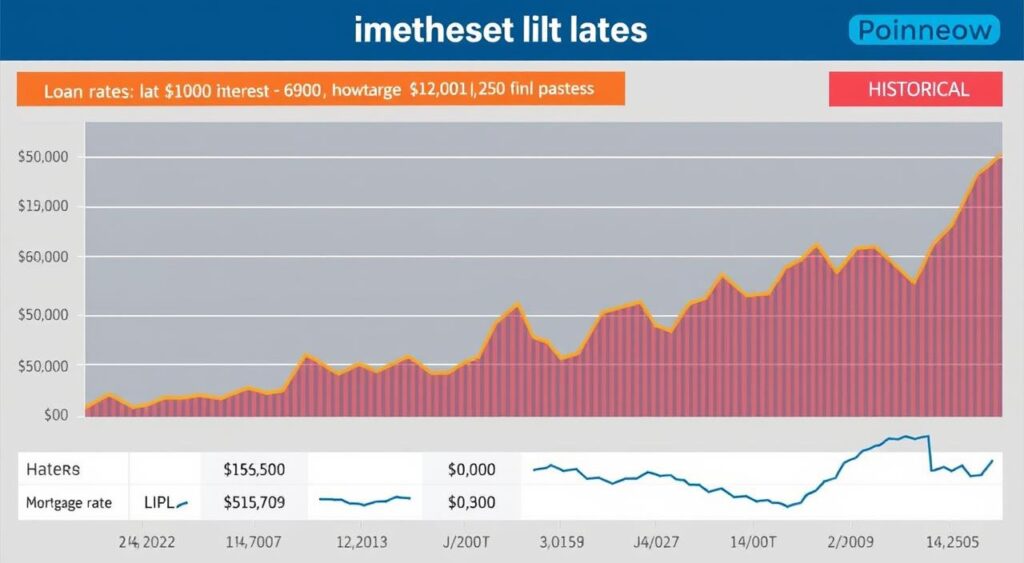
Historical Perspective of Mortgage Rate Trends
Exploring the evolution of mortgage rates offers deep insights into the economic forces at play. Factors like inflation and Federal Reserve actions have been key drivers of these changes. By studying past trends, you can better prepare for your mortgage journey.
Lessons from Past Mortgage Rate Fluctuations
Throughout history, mortgage rates have seen their fair share of highs and lows, mirroring the state of the economy. For instance, high inflation has often led the Federal Reserve to tweak interest rates, aiming to balance the economy. A prime example was in June 2022, when inflation hit a staggering 9.1%. This spike significantly influenced both public sentiment and market dynamics, highlighting the critical link between economic health and mortgage rates.
Investment firms’ polls also shed light on market expectations around the Fed’s rate decisions. For example, a recent poll showed 99.55% of professionals believed the federal funds rate would remain unchanged. This cautious consensus reflects the market’s sensitivity to economic signals, underscoring the importance of staying abreast of trends for borrowers.
| Rate Change Scenario | Earnings on $20,000 Investment |
|---|---|
| Current Rate at 3% APY | $600 |
| Rate drops by 25 basis points | $550 |
| Rate drops by 50 basis points | $500 |
| Rate increases by 25 basis points | $650 |
| Rate increases by 50 basis points | $700 |
| Investment at 4% APY | $800 |
These scenarios not only highlight the financial implications of rate changes but also serve as warnings for those venturing into the mortgage market. Grasping the interplay between economic indicators and historical mortgage rates will empower you to navigate future rate shifts more effectively.
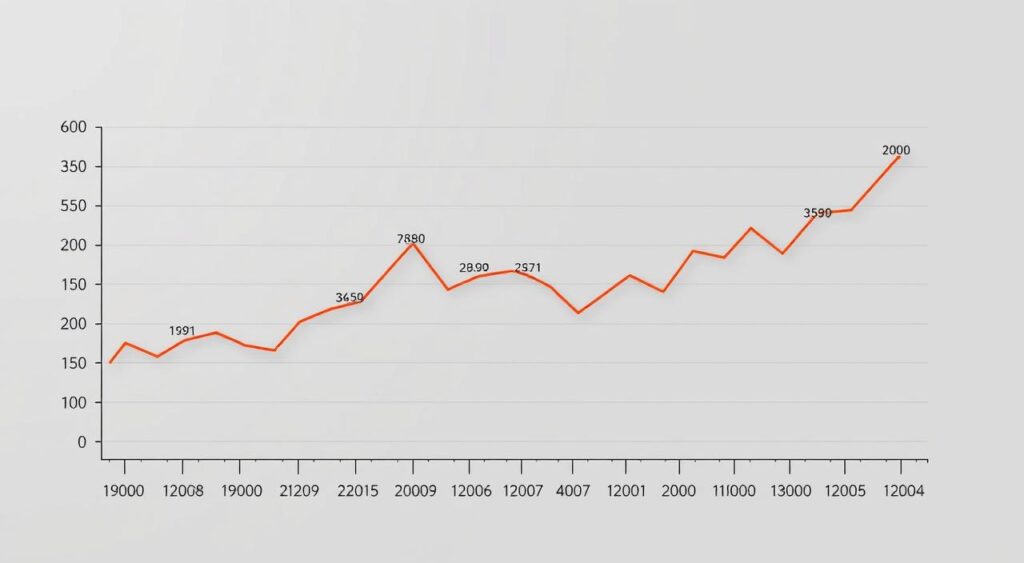
Mortgage Interest Rates Today: A Closer Look
Understanding the differences in mortgage interest rates across regions is key to making smart mortgage choices. Rates can change a lot due to local market conditions, state laws, and the overall economy. By examining these factors, you can find the best mortgage for your needs.
Regional Variances in Mortgage Rates
Mortgage interest rates vary across the United States. Several factors influence these rates, including:
- Local economic conditions: Areas with strong economic growth often see higher housing demand, leading to higher mortgage rates.
- State mortgage rates: States have different regulations and taxes that affect borrowing costs.
- Competition among lenders: Regions with more lenders tend to have lower mortgage rates due to competition.
To find the best rates, look into local mortgage rates. Use platforms that compare rates by location. This way, you can see how local rates compare to national averages. Whether you’re looking for a VA or FHA loan, understanding local market differences can help you find great deals.
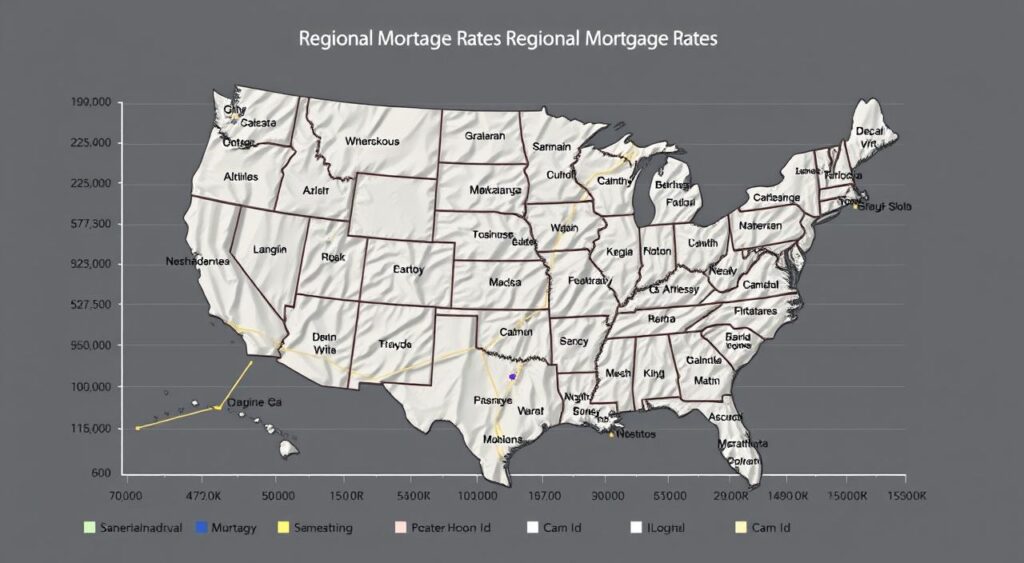
Benefits of Refinancing Rates
Refinancing can bring about substantial benefits, mainly when dealing with mortgage refinancing complexities. A key advantage is the reduction in monthly payments, which boosts your budget’s cash flow. It also leads to lower interest payments over the loan’s life, saving you a lot of money. Homeowners can tap into their equity, enabling them to fund home improvements or consolidate debts. It’s vital to understand when to refinance to fully benefit from these advantages.
When Is the Right Time to Refinance?
The ideal time for refinancing hinges on market conditions and your financial status. Homeowners should evaluate current refinancing rates against their current mortgage terms. It’s wise to refinance when:
- Your current interest rate is much higher than today’s rates.
- You’re looking to switch from an adjustable-rate to a fixed-rate mortgage.
- Your credit score has risen, opening up better refinancing opportunities.
- You wish to consolidate debt and leverage home equity more efficiently.
Keeping an eye on market trends will help pinpoint the best time to refinance. This ensures your decision is both strategic and financially beneficial.
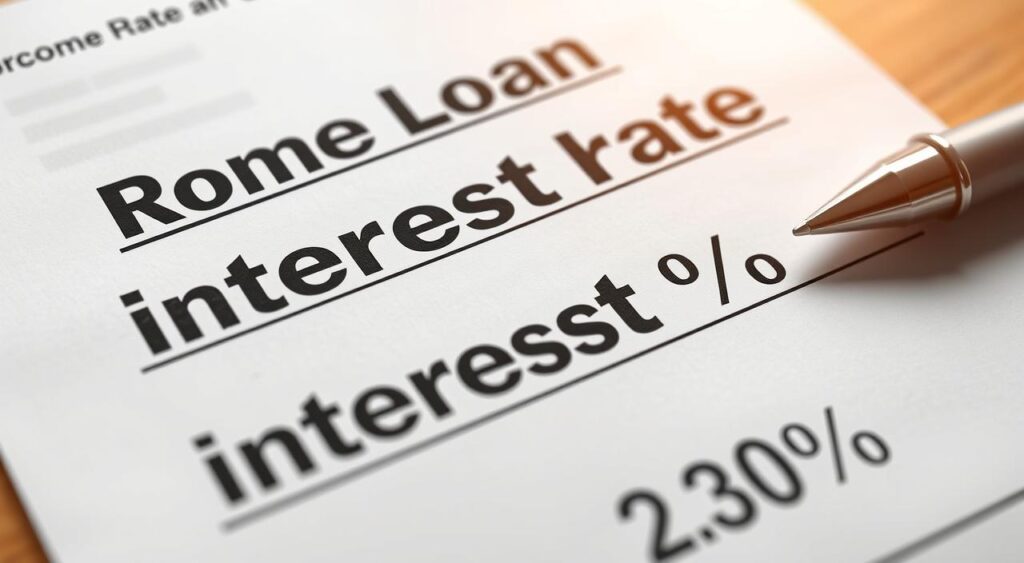
Common Misconceptions about Mortgage Interest Rates
Many homeowners and those looking to buy face challenges in grasping mortgage interest rates. Several myths about rates exist, leading to financial decisions based on wrong assumptions. One widespread myth is that all lenders offer the same terms. In truth, rates can vary greatly among lenders, influenced by your credit score, down payment, and market conditions.
Another common myth is that you can’t refinance with a low credit score. The reality is that numerous programs exist to help those with less-than-perfect credit. Being well-informed can lead to significant savings and lower monthly payments.
To debunk some of the most enduring misconceptions about rates, consider the following table:
| Misconception | Fact |
|---|---|
| All lenders have the same rates. | Interest rates differ by lender and depend on several factors including credit score. |
| You can’t refinance with a low credit score. | Several programs exist that cater to lower credit scores for refinancing. |
| Only first-time buyers qualify for low mortgage rates. | Current homeowners can also benefit from low rates through refinancing options. |
| Raising your credit score takes years. | There are strategies to improve credit quickly, impacting mortgage rates positively. |
Being aware of these myths and misconceptions about rates helps you approach the mortgage process more clearly. Understanding the truth about mortgage rates allows you to make informed decisions. These decisions can save you money in the long run.

The Role of Credit Scores in Determining Your Rate
Your credit score is key in determining mortgage rates. A higher score often means lower rates, saving you thousands in interest. Scores range from 300 to 850, with 700 being the sweet spot for the best rates. Knowing how to boost your credit can open up better financing options.
Improving Your Credit to Secure Better Rates
To enhance your credit score, follow these steps:
- Pay Bills on Time: Payment history is 35% of your FICO score. Timely payments can significantly increase your score.
- Reduce Credit Card Balances: Credit balance is 30% of your FICO score. Keeping balances under 30% of your limit can improve your score.
- Check Your Credit Report: Regularly reviewing your report for errors can help correct inaccuracies that harm your score.
- Avoid New Credit Applications: New inquiries can initially lower your score. Limit them, espcially before applying for a mortgage.
- Diverse Credit Accounts: A mix of credit types is 10% of FICO’s evaluation. It positively affects your score.
Understanding credit’s role in financing helps improve your situation. It also prepares you for your mortgage application. Good credit practices can lead to better terms and lower rates.

Understanding the Mortgage Interest Rates In Future
Looking ahead, grasping future mortgage rates is critical for making smart choices. These rates are influenced by current economic signs. These signs include inflation rates, job numbers, and how much people spend.
Experts often base their predictions on economic forecasts pointing to higher rates. This is due to expected changes in Federal Reserve policies. Homebuyers need to be ready for rate changes as the economy slowly recovers.
Market analysts track trends that hint at future rate movements. For example, if inflation keeps rising or gets worse, the Federal Reserve might raise interest rates. This move affects mortgage rates, pushing them up.
To see possible rate changes, check out the table below. It outlines what experts think about rising mortgage rates in the next few years:
| Year | Projected Average 30-Year Fixed Rate (%) | Key Economic Event |
|---|---|---|
| 2024 | 7.0% | Federal Reserve Rate Hike |
| 2025 | 7.5% | Inflation Stabilization Efforts |
| 2026 | 8.0% | Gradual Economic Recovery |
It’s vital to anticipate these rate shifts for both current homeowners and those looking to buy. Keeping an eye on interest rate predictions helps plan the best times for buying or refinancing. Being up-to-date on economic forecasts can greatly influence your financial planning.

Evaluating Offers from Multiple Lenders
When you’re in the market for a mortgage, comparing mortgages from different lenders is key. Each lender has unique terms, rates, and conditions that can greatly affect your financial future. To effectively multiple lender evaluation, start by collecting all the offers from lenders.
It’s vital to understand the details of these offers. Don’t just focus on the interest rates. Consider other factors such as:
- Fees: Origination fees, closing costs, and other charges can add up.
- Loan terms: Look at the loan’s duration and any prepayment penalties.
- Flexibility: Some lenders offer the chance to refinance or adjust terms without big penalties.
For example, you might qualify for up to $62,500 in a 10-year payoff plan. Remember, the amount you can borrow is usually capped at 80% of your home’s equity. Yet, some lenders might lend up to 100% in refinance situations. The Loan-to-Value (LTV) ratio limit for home equity lines of credit (HELOCs) on owner-occupied homes is typically 85%.
This methodical approach to comparing mortgages helps you grasp what each lender offers. It also lets you pick the best option for you. Be aware that your monthly payments might increase after the draw period of a HELOC ends. At that point, payments will include both interest and principal.
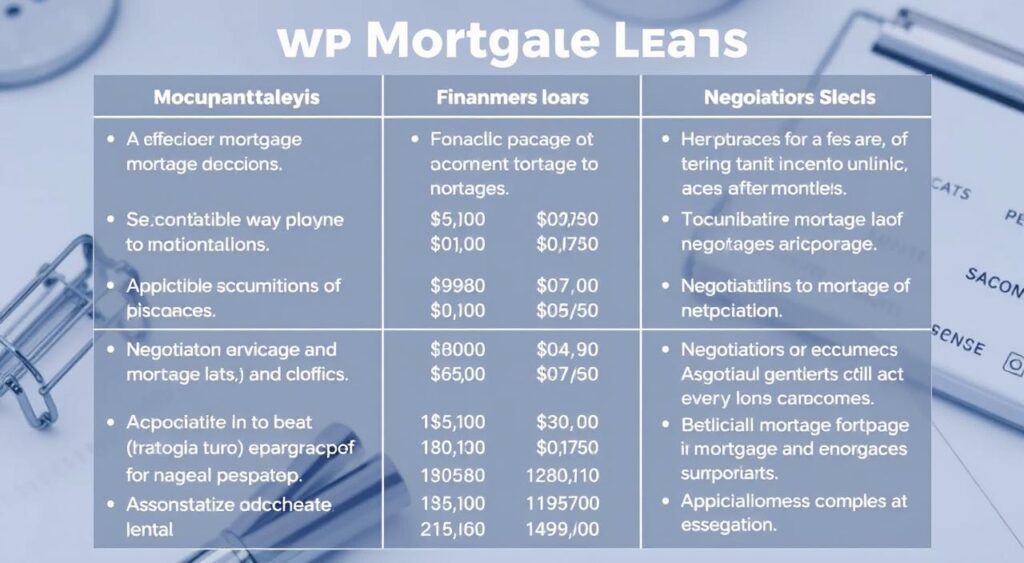
Questions to Ask Your Mortgage Broker
Choosing a mortgage broker can greatly impact your home buying journey. It’s vital to prepare a list of questions for brokers that align with your needs and concerns. Knowing the right questions can lead to better borrowing decisions.
When talking to your broker, consider these key mortgage broker inquiries:
- What types of mortgage products do you recommend based on my financial situation?
- How do current interest rates compare to historical trends?
- What fees should I expect throughout the mortgage process?
- Can you explain the implications of locking in my rate versus a float strategy?
Understanding the mortgage process can help you grasp how costs might change. Knowing about different down payment options can also shape your financial plan. A questions for brokers list that fits your situation can improve your conversation with your mortgage expert.
Here’s a table comparing various mortgage types and their features:
| Mortgage Type | Interest Rate Structure | Typical Loan Term | Monthly Payment Impact |
|---|---|---|---|
| Fixed-Rate Mortgage | Constant interest rate | 15 to 30 years | Stable payments throughout the loan term |
| Adjustable-Rate Mortgage (ARM) | Initial fixed rate followed by adjustable rates | 5, 7, or 10 years followed by adjustments | Payments can fluctuate significantly after the fixed period |
| Interest-Only Mortgage | Interest-only payments for a period | Various lengths | Lower payments initially, but higher payments afterward |
Being proactive in your discussions can open up chances for informed borrowing. Prepare your questions carefully and evaluate the answers well. This approach will lay a strong foundation for a successful mortgage journey.

How to Lock in Your Mortgage Rate
Locking in mortgage rates offers significant benefits, mainly when interest rates are unpredictable. A mortgage rate lock is an agreement between you and your lender. It ensures your interest rate stays the same for a set period. Knowing how to secure your rate is key for anyone looking to buy a home.

- Choose the right time: Lock in your rate when market conditions are good and rates are stable or falling.
- Communicate with your lender: Let your lender know you want to lock in your rate and learn their process.
- Specify the duration: Rate locks usually last 30 to 60 days, but this can differ by lender.
- Review the terms: Make sure you understand any fees for the rate lock and what happens if you miss the closing date.
Securing your rate through a mortgage rate lock offers several benefits:
- It protects you from rising interest rates during the loan process.
- It helps with budgeting and financial planning by keeping your monthly payments fixed.
- It gives you confidence when searching for a home, knowing your rate is locked in.
The benefits of locking in your mortgage rate are critical for making smart financial choices. With rates always changing, locking in your rate brings peace of mind. It also puts you in a stronger position in the housing market.
| Factor | Advantages of Locking in Rates | Disadvantages of Not Locking in Rates |
|---|---|---|
| Cost Stability | Prevents higher rates from affecting your payments | Your payments may increase if rates rise |
| Time Management | Allows you to focus on other buying process aspects | You may rush decisions, potentially missing opportunities |
| Market Conditions | Protects against unfavorable market movements | Could lead to higher costs if market shifts occur |
Securing your rate offers both assurance and security during your mortgage journey. By grasping the importance of locking in rates, you can better navigate the lending landscape.
Strategies for Securing the Best Mortgage Rates
Understanding the factors that influence mortgage rates is key. Timing and current market conditions play a significant role. By adopting the right strategies, you can save a lot over the loan’s life. It’s essential to navigate this complex landscape effectively.
The Importance of Timing and Market Conditions
Interest rates are heavily influenced by market conditions. Staying informed about trends helps you pick the best time to secure rates. Here are some strategies to consider:
- Monitor Economic Indicators: Keep an eye on inflation rates, employment statistics, and Federal Reserve decisions. These factors can significantly impact market conditions.
- Shop Around: Different lenders offer varying rates. Comparing options increases your chances of finding a deal that suits your needs.
- Improve Your Credit Score: A higher credit score can lead to better interest rates. It’s vital to maintain or improve your credit profile.
- Consider Your Down Payment: A larger down payment can lower your interest rate. Increasing your down payment can significantly reduce your borrowing cost.
- Timing Your Lock-In: Locking in your mortgage rate during favorable market conditions can protect you from future rate hikes.
Understanding the link between market conditions and interest rates is critical. This knowledge enables you to make informed decisions. It positions you to take advantage of the best mortgage rates available.

| Factor | Impact on Mortgage Rates |
|---|---|
| Credit Score | Higher scores may lower rates significantly. |
| Down Payment | Larger down payments can secure better rates. |
| Market Conditions | Influences overall interest rate trends. |
| Loan-to-Value (LTV) Ratio | Lower LTVs typically yield better rates. |
| Debt-to-Income Ratio | Higher ratios can lead to increased rates. |
By using these strategies, you can leverage favorable market conditions. This maximizes your chances of securing the best mortgage rates for your financial situation.
Conclusion
The mortgage interest rate landscape has seen significant changes, with rates rising from about 3.25% at the start of 2022 to highs of 8% by late 2023. This mortgage interest rates summary underlines the critical need to grasp current trends. These trends have a direct impact on both home buyers and those looking to refinance. Each choice between a fixed-rate or adjustable-rate mortgage carries significant financial implications for the loan’s duration.
The conclusion on mortgage rates emphasizes the importance of making well-informed decisions. It’s not just about the current rates but also your long-term financial objectives, the state of the market, and how your credit score influences the rates you can get. It’s essential to regularly reassess your options, more so if you’re in an adjustable-rate mortgage that could lead to increased payments over time.
Ultimately, the article’s key takeaways underscore the necessity of being proactive and well-informed in the mortgage process. By understanding the factors that drive mortgage rates and keeping abreast of market changes, you can make decisions that support your financial goals. This approach maximizes your home buying or refinancing experience.














